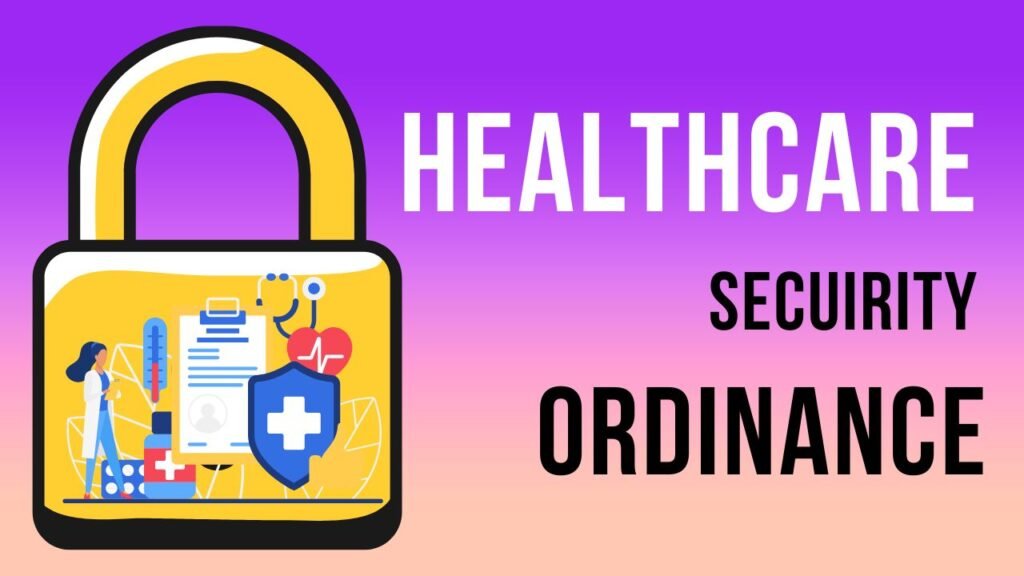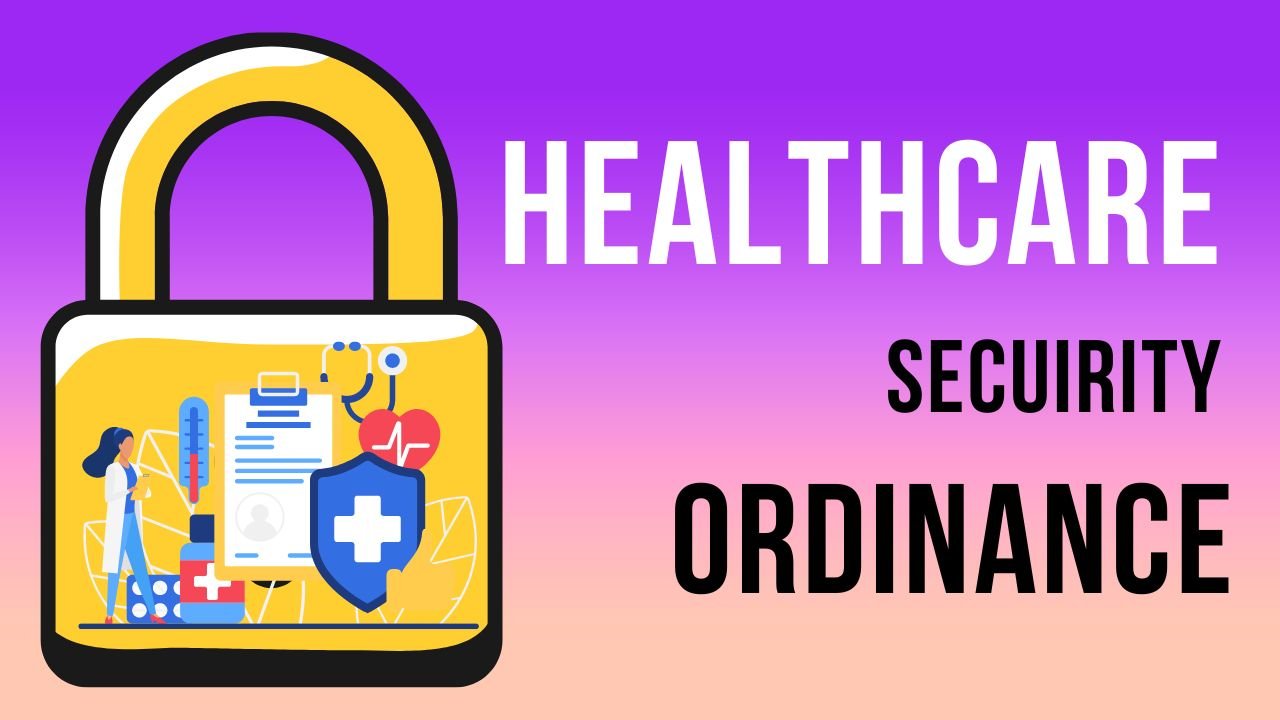
The Healthcare Security Ordinance mandates security measures to protect patient data. It requires healthcare entities to implement safeguarding protocols.
The Healthcare Security Ordinance is pivotal for protecting sensitive patient information within the healthcare industry. The ordinance sets strict standards for data handling, ensuring confidentiality, integrity, and accessibility of patient records. To comply, healthcare providers, insurance companies, and associated organizations must adhere to rigorous cybersecurity practices.
The ordinance aims to prevent data breaches that could compromise patient privacy and trust. With the increase in digital health records, adherence to such an ordinance offers peace of mind to patients and establishes a robust framework for healthcare data protection. This legislation is crucial in maintaining legal compliance and fostering a secure environment for healthcare operations.
Credit: www.24hourtranslation.com
Introduction To The Healthcare Security Ordinance
Picture a world where your health information is always safe. That’s what the Healthcare Security Ordinance aims for.
It’s a law to protect our health records. This introduction will peek into its origins, purpose, and present-day challenges.
Let’s explore how this ordinance keeps our sensitive health details locked tight.
Origins And Purpose
The Healthcare Security Ordinance started to keep health data safe. Hospitals and clinics store lots of personal info.
This ordinance ensures that it is kept private and secure. The main goals include:
- Protecting personal health information
- Setting rules on how to handle this info
- Make sure there are penalties for breaking these rules
Current Healthcare Security Challenges
Today, the health industry faces new threats online. Hackers, malware, and even insiders put our data at risk.
The current challenges include:
- Defending against cyberattacks
- Training staff on security
- Staying up-to-date with new technologies
It’s a constant battle to keep healthcare data safe and sound. But with the ordinance, there’s a way to fight back.

Credit: medium.com
Key Components Of The Ordinance
The Healthcare Security Ordinance encompasses vital elements to safeguard sensitive personal health information. Understanding these components ensures compliance and the protection of patient trust.
Privacy And Data Protection
Healthcare providers must protect patient privacy. This involves various strategies to secure health records. The ordinance mandates strict controls on the handling of health data. Here’s a breakdown:
- Encryption: All sensitive data must be encrypted.
- Data Minimization: Only necessary information is collected.
- Retention Policy: Data is not kept longer than needed.
Training for staff on privacy is also crucial.
Access Control Mechanisms
To prevent unauthorized access, facilities must implement strong access controls. Key methods include:
- User Authentication: Verifies a user’s identity.
- Role-Based Access: Limits data access based on user roles.
- Audit Trails: Tracks who accessed what information and when.
Rigorous monitoring complements these controls to detect breaches promptly.
Impact On Patient Safety
Patient safety stands at the forefront of healthcare priorities. The Healthcare Security Ordinance brings crucial enhancements to this aspect. It ensures a safer environment by reducing risks associated with medical treatment. Let’s delve into how this ordinance fosters a more secure patient healthcare experience.
Reducing Medical Errors
Lowering the number of medical mishaps is essential. The Healthcare Security Ordinance introduces strict protocols. Medical teams must follow set procedures to prevent errors in diagnosis and treatment. These measures directly contribute to patient well-being.
- Standardized checklists for surgeries
- Enhanced drug administration accuracy
- Regular staff training programs
Enhancing Confidentiality Of Health Records
Patients trust their healthcare providers with sensitive data. The ordinance mandates robust security to protect this trust. Digital and physical safeguards shield health records from unauthorized access.
| Measure | Impact |
|---|---|
| Encryption Technologies | Secures data transfers |
| Access Controls | Limits record availability |
| Audit Trails | Tracks record activity |
Each step preserves the integrity and confidentiality of patient health information.
Compliance Measures For Healthcare Providers
Compliance Measures for Healthcare Providers play a crucial role in protecting patient data. Failure to follow these measures can lead to data breaches and heavy fines. Healthcare organizations must stay on top of these regulations to maintain privacy and security.
Training And Education
Proper training and education ensure staff understand security protocols. These strategies help:
- Minimize risks: By learning about potential threats.
- Stay updated With the latest security practices and compliance laws.
- Promote a secure culture: Encouraging staff to take security seriously.
All employees need regular training sessions. This includes full-time, part-time, and contract workers.
Regular Security Assessments
Security assessments are vital to uncover vulnerabilities. They:
- Identify weak spots In systems and processes.
- Recommend improvements: To better secure patient information.
- Ensure compliance With current healthcare security laws.
Healthcare providers should schedule these assessments at least once a year. Some choose to do them more frequently for added safety.
Latest Technological Solutions
The healthcare industry faces increasing threats. Hospitals and clinics now seek cutting-edge tech to protect patient data. These tools comply with legal demands and provide peace of mind.
Encryption And Cybersecurity Tools
Strong encryption is vital for safeguarding healthcare data. Cybersecurity solutions have become robust. Here’s how they bolster defenses:
- End-to-end encryption secures data across networks.
- Firewalls and antivirus software block threats.
- Secure email gateways ensure private communication.
Regular updates and monitoring are also crucial habits. They keep these tools sharp against new threats.
Biometric Verification Systems
Biometric systems are a game-changer. They use unique human features to secure access to facilities and data quickly. Here’s what stands out:
| Technology | Benefits |
|---|---|
| Fingerprint Scanners | Fast, user-friendly, and hard to fake. |
| Facial Recognition | Secure without physical contact. |
| Retina Scans | High accuracy, uses eye patterns. |
These systems integrate with access management. They ensure that only authorized staff can enter sensitive areas or access data.

Credit: twitter.com
Case Studies: Ordinance In Action
The Healthcare Security Ordinance shapes the safeguarding of sensitive medical data. We learn the ordinance’s practical impact by exploring Case Studies: Ordinance in Action.
Success Stories
Several healthcare facilities have thrived under the new ordinance. They demonstrate how the proper security measures can protect patient data.
- Regional Hospital A – Implemented end-to-end encryption. Zero data breaches since the ordinance.
- Clinic B – Adopted two-factor authentication. Patients’ trust increased.
- Health Center C – Trained staff on security. The center passed all compliance audits.
Learning From Security Breaches
Some institutions faced data breaches before embracing the ordinance. Their experiences offer valuable lessons.
| Facility | Breach Incident | Lessons Learned |
|---|---|---|
| Hospital X | Unauthorized access to patient records. | Hospital improved access controls and monitoring. |
| Clinic Y | Phishing attacks led to compromised data. | The clinic invested in staff cybersecurity training. |
| Pharmacy Z | We lost a storage device with patient information. | Encryption of all devices storing patient data began. |
The Future Of Healthcare Security
Healthcare security is evolving rapidly, with innovative technology driving better protection of patient data. Integrating advanced analytics and global cooperation will redefine how we safeguard sensitive information as we move forward.
Predictive Analytics In Patient Privacy
Incorporating predictive analytics into healthcare can anticipate potential privacy breaches. Healthcare institutions use sophisticated algorithms to analyze patterns. This proactive stance strengthens defenses against data breaches.
- Early threat detection: Systems predict unusual access patterns, alerting security teams.
- Customized security protocols: Analytics tailor security measures to individual patient risk factors.
- Continuous learning: Programs adapt by learning from new attacks and vulnerabilities.
Predictive analytics keep patient data secure by staying a step ahead of threats.
International Perspectives And Adaptations
Global collaboration is critical to enhancing security protocols in healthcare. Different countries are sharing techniques and strategies to improve data protection.
| Region | Contribution |
|---|---|
| Europe | Stricter privacy regulations like GDPR |
| Asia | Innovative cybersecurity technology adoption |
| North America | Comprehensive cybersecurity frameworks |
Through international cooperation, global standards for healthcare security will likely emerge. These standards will provide consistent protection for patient data, regardless of location.
Looking to the horizon, healthcare security will embrace cutting-edge technology and global insight. This union ensures robust protection for one of our most confidential datasets: personal medical records.
Frequently Asked Questions For Healthcare Security Ordinance
What Is The Healthcare Security Ordinance In California?
The Healthcare Security Ordinance in California mandates employers to contribute to workers’ health care in cities like San Francisco. It aims to expand health insurance coverage for employees in the town.
What Is The Health Tax In San Francisco?
The health tax in San Francisco refers to the Health Care Security Ordinance (HCSO), which requires certain employers to provide health benefits to their employees.
What Is the Healthcare Security Ordinance?
Healthcare Security Ordinance refers to legal guidelines and standards. These ensure the protection of patient data in healthcare settings. They mandate strong cybersecurity practices to safeguard sensitive health information.
Why Is Healthcare Security Important?
Healthcare data contains sensitive personal information. Security keeps this data safe from unauthorized access and breaches. It’s vital for preserving patient trust and complying with legal responsibilities.
Conclusion
Ensuring robust protection within healthcare is no small feat. This ordinance presents a structured guide to strengthen data security and safeguard patient privacy. Adopting such measures is vital for trust and compliance. Let’s embrace these standards for a safer healthcare future.
Remember, security isn’t just a policy; it’s a promise to every patient.

I am a blogger for holistic wellness & longevity. With a passion for nutrition, fitness, & mindfulness, I’m dedicated to sharing insights on healthy living. Join my journey towards a vibrant life with practical tips & evidence-based advice. Embrace vitality and thrive with me!

